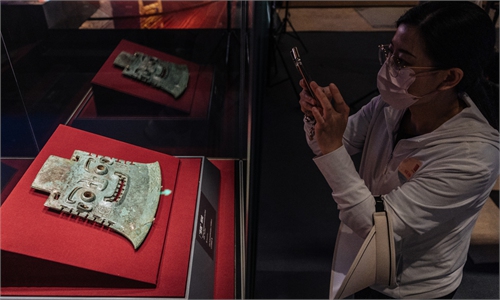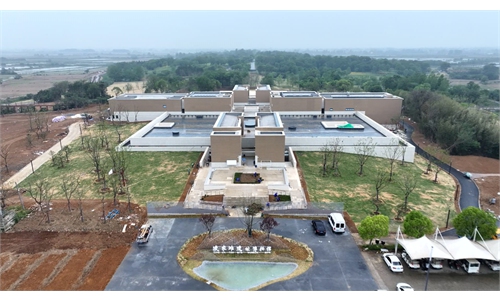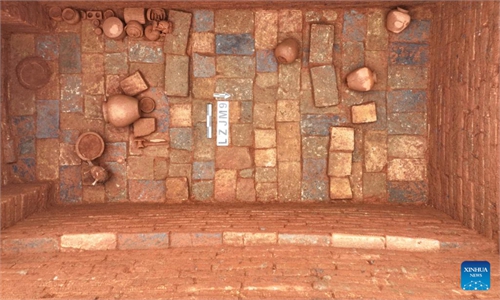ARTS / CULTURE & LEISURE
Newly renovated Western Han Dynasty tomb museum
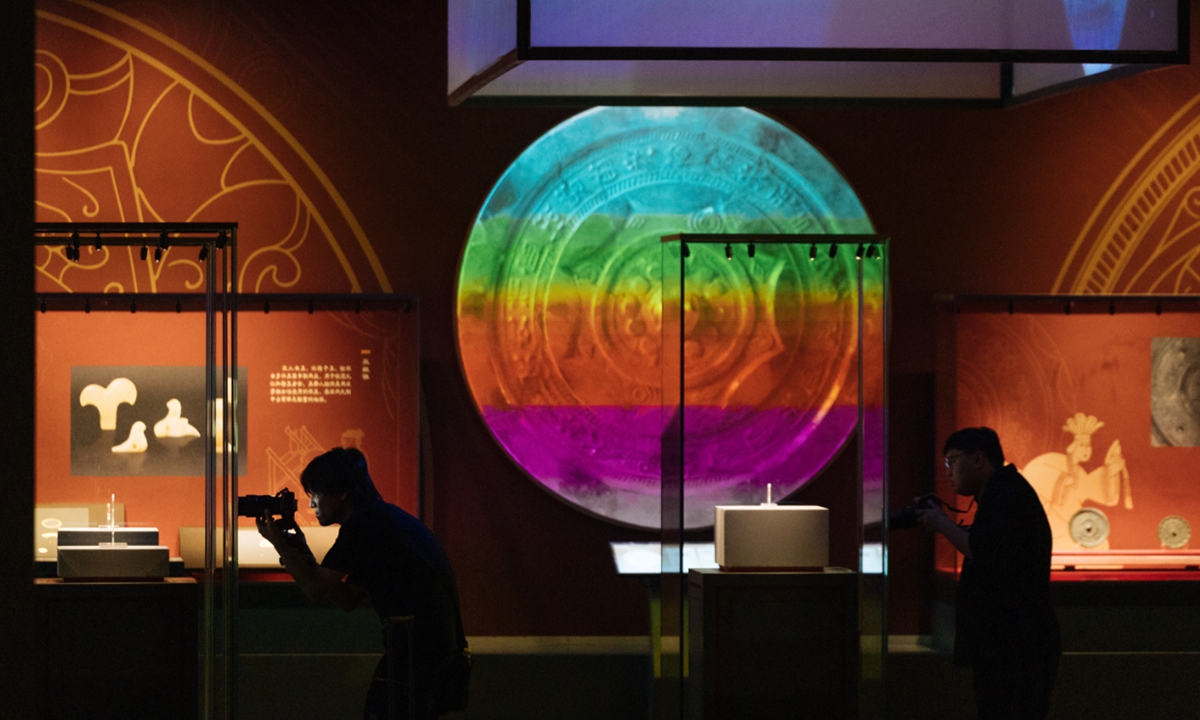
The Dabaotai Tomb site museum in Beijing Photo: Li Hao/GT
A newly renovated museum at the Dabaotai Tomb site in Beijing officially opened to the public on Tuesday, offering a rare glimpse into the burial practices and cultural landscape of the Western Han Dynasty (206BC-AD25).The site, discovered in Beijing's Fengtai district, is believed to be the burial place of Liu Jian, King of Guangyang, and his queen. This was the first archaeological site in China to have a complete Western Han royal tomb structure, featuring the zigong (outer coffin chamber), bianfang (side chamber), and the unique huangchang ticou - a burial system using aligned cypress wood that was historically reserved for emperors and kings.
"The Dabaotai Tomb, excavated in 1974, is renowned for its imperial burial system and holds significant value for the study of the Han Dynasty's political, economic, and cultural development, as well as the military organization in northern China," Bai Yunxiang, deputy director of the Institute of Archaeology under the Chinese Academy of Social Sciences, told the Global Times at the opening ceremony.
Liu Zheng, a member of the Chinese Society of Cultural Relics, further noted that complete Han tombs like this are rare.
"The preserved huangchang ticou structure is especially significant - it uses the heartwood of Chinese cypress trees arranged in a uniform direction and provides critical insights into Han burial traditions," Liu said.
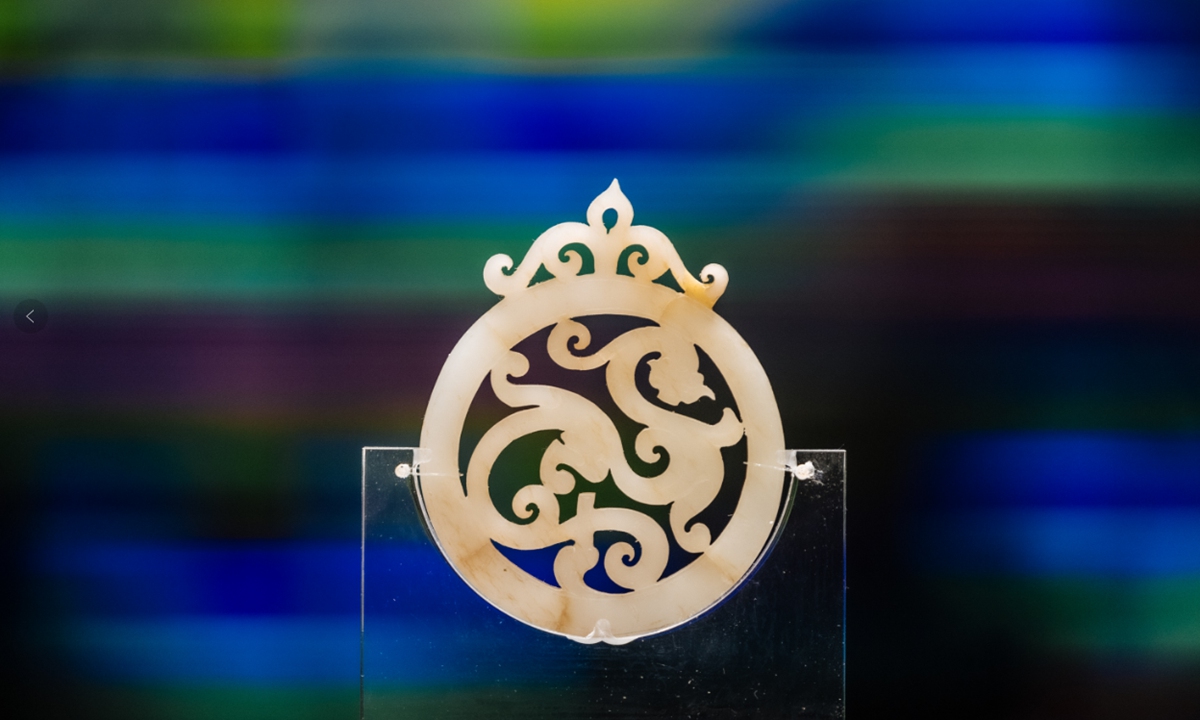
The Dabaotai Tomb site museum in Beijing Photo: Li Hao/GT
The original museum, built in 1983, was China's first to focus on Han-era archaeology. The newly renovated facility spans 7,600 square meters.Designed under the principles of "overall protection" and "minimal intervention," the new museum integrates indoor and outdoor designs. Tomb No.1 is preserved within the museum, while Tomb No.2 has been reconstructed in an open-air plaza using stone and landscaped materials. Other features, such as a Jin Dynasty (1115-1234) well and the original burial mound, are now part of the museum's immersive environment.
The venue is envisioned as a regional hub for Han Dynasty archaeology and cultural education. Liu Naitao from the Beijing Municipal Institute of Cultural Relics told the Global Times that the museum's design features symbolic Han motifs, including yellow dragons, red phoenixes, and galloping horses, meant to evoke harmony and prosperity.
The museum opened with two major exhibitions. The permanent display, an exhibition of the history and culture of the Guangyang Kingdom in the Western Han Dynasty, draws on artifacts unearthed from the tombs to illuminate the politics, culture, and daily life of the Youyan region during Western Han. Meanwhile, a special exhibition focusing on the life and art of Mawangdui presents exquisite pieces from the famous Mawangdui Tombs in Hunan Province, offering a comparative look at aristocratic life, fashion, and spiritual beliefs across the Han empire.
Among the most compelling items on display are a gilded bronze door knocker believed to have adorned a royal chamber and a uniquely shaped jade piece combining a Bi disc (a round, flat, colored stone with a circular hole in the middle) and archer's ring with intertwined dragon-phoenix motifs.
Other highlights include a delicate white jade dancer from the King of Guangyang Mausoleum that shows a long-sleeved figure mid-motion, with one arm raised and skirt brushing the ground. Tiny holes suggest it was once part of a jade pendant set. The piece reflects the Han ideal of elegance – slim waists, flowing robes, and graceful poise.
Liu added that the museum's reopening complements other regional archaeological initiatives, including the forthcoming Luxian County Ancient City Ruins Archaeological Park. Together, these efforts deepen public understanding of the enduring legacy of the Han Dynasty (206BC–AD220) in northern China.
